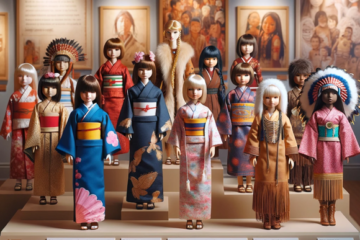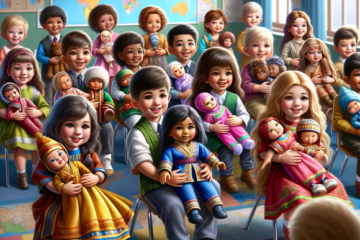In a world where diversity is the cornerstone of humanity, the representation of ethnic diversity in dolls stands as a powerful testament to inclusivity. For generations, dolls have been more than mere playthings; they are reflections of society’s values, aspirations, and evolving attitudes towards inclusivity. In recent years, there has been a significant shift towards embracing diversity in all its forms, including ethnicity, and the representation of diverse ethnicities in dolls has emerged as a crucial aspect of this movement.
The significance of ethnic representation in dolls cannot be overstated. From a young age, children are exposed to a myriad of influences that shape their perceptions of themselves and others. Dolls, as one of the earliest toys children interact with, play a pivotal role in shaping these perceptions. When children are presented with dolls that accurately reflect the diversity of the world around them, it sends a powerful message that every ethnicity is valued and worthy of representation.
Moreover, dolls serve as mirrors through which children can explore and affirm their own identities. For children belonging to ethnic minorities, seeing dolls that look like them validates their experiences and instills a sense of pride in their cultural heritage. Conversely, for children belonging to the majority ethnicity, exposure to diverse dolls fosters empathy, understanding, and appreciation for different cultures.
Beyond individual identity formation, ethnic representation in dolls has broader societal implications. By diversifying the range of available dolls, toy manufacturers play a pivotal role in challenging stereotypes and dismantling biases. When children are exposed to dolls of different ethnicities, it broadens their worldview and fosters a more inclusive mindset, laying the foundation for a more tolerant and harmonious society.
Furthermore, ethnic representation in dolls has tangible benefits for children’s cognitive and socio-emotional development. Studies have shown that exposure to diverse toys promotes cognitive flexibility, creativity, and problem-solving skills. Additionally, playing with dolls of different ethnicities encourages empathy, cooperation, and communication skills, as children learn to navigate and appreciate cultural differences in a playful and non-threatening environment.
Despite the progress made in recent years, there is still much work to be done to ensure equitable representation in the doll industry. Too often, ethnic minorities are relegated to tokenistic roles or sidelined altogether in favor of more mainstream representations. Toy manufacturers must recognize the inherent value of ethnic diversity and actively strive to create dolls that authentically represent the rich tapestry of human experiences.
In conclusion, the representation of ethnic diversity in dolls is not merely a matter of political correctness; it is a fundamental issue of equity, justice, and human dignity. By embracing diversity in all its forms, including ethnicity, we create a world where every child can see themselves reflected and celebrated. Through inclusive representation in dolls, we sow the seeds of a more inclusive and compassionate society for generations to come.



0 Comments